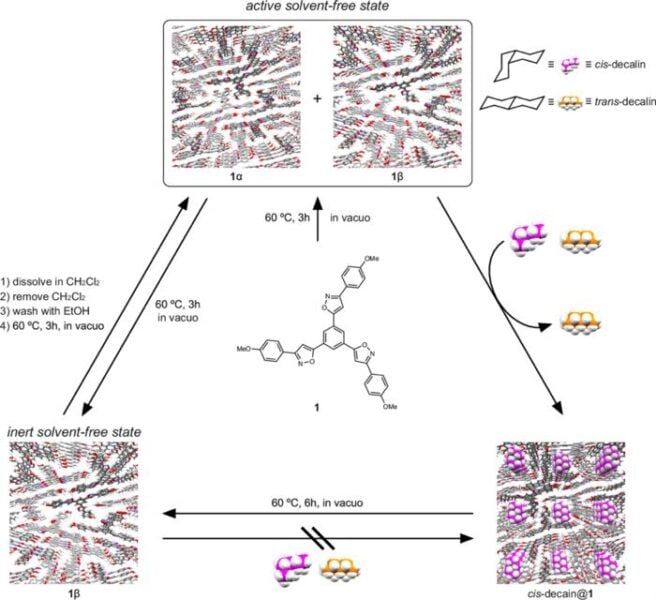Summary: Scientists have discovered how a unique material can selectively trap specific molecules using pores that only appear when needed. The research, focusing on a crystal called planar tris(phenylisoxazolyl)benzene, demonstrated 96% accuracy in separating different forms of the same chemical, offering potential applications across various industries.
Nature Communications, September 27, 2024, DOI: 10.1038/s41467-024-52526-9 | Reading time: 4 minutes
Imagine a sieve whose holes appear only when certain substances approach it. This seemingly magical property is now a reality, thanks to research from Hiroshima University that explores materials with “latent pores” – molecular holes that materialize only under specific conditions.
The Mystery of Vanishing Holes
These newly developed materials belong to a class called macrocyclic molecular crystals, which contain large ring-shaped molecules. “By designing materials with latent pores, we potentially can create systems that respond dynamically to environmental changes, enhancing their functionality and selectivity,” explains Takeharu Haino from Hiroshima University.
The researchers focused on a specific crystal with a benzene ring at its heart, chosen for its relative simplicity compared to other options. Using x-ray diffraction analysis, they observed how the material’s structure changed as it interacted with different chemicals.
Practical Applications
The study tested the material’s ability to separate two forms of decalin, a common industrial solvent. The results were remarkable – the crystal correctly selected one form over the other 96% of the time, demonstrating exceptional precision in molecular separation.
This discovery could revolutionize various industrial processes, from gas storage to oil separation and water purification. The material’s stability makes it particularly promising for commercial applications, unlike some other porous materials that lack the necessary durability.
Glossary of Terms
- Latent Pores: Molecular holes that only appear under specific conditions
- Macrocyclic Molecular Crystals: Solids formed from large ring-shaped molecules
- X-ray Diffraction: A technique using x-rays to determine molecular structure
- Selective Encapsulation: The ability to trap specific molecules while excluding others
Test Your Knowledge
What percentage accuracy did the material achieve in separating decalin forms?
96%
What technique did researchers use to observe the material’s structure?
X-ray diffraction analysis
What type of ring forms the center of the studied crystal?
A benzene ring
Name three potential applications for this technology
Gas entrapment, oil separation, and removal of trace elements from water
Enjoy this story? Get our newsletter! https://scienceblog.substack.com/


